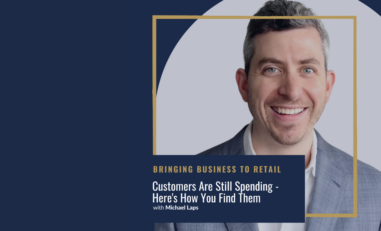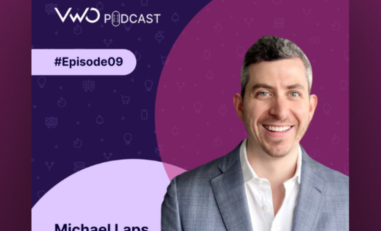13 April, 2021
I was a guest on Ticker News’ business segment to discuss the topic: “Digital Strategies for Growth”. We covered the impact of COVID on businesses and marketing, how to build marketing strategies in a post-COVID world, and where to best invest your marketing dollars to grow your business.
Video length: 5:39

Transcript:
TN:
Well with everything in the digital world trackable and also measurable there’s more information about consumer behaviour than ever before. Our next guest is helping businesses to use this data to build strategies for their growth. For more let’s bring in Michael Laps. Really good great to have your company, Michael. Thanks for your time. Talk to us about this – what’s the most prominent consumer trend that you’ve seen lately, and especially over the last 12 months.
ML:
Well I think there’s a little bit of a waterfall effect. There’s more consumers shopping online than there ever have been. A recent MasterCard report said there’s almost an extra $900 billion being spent online compared to the previous year since COVID hit, but simultaneously there’s more businesses online than ever before so competition is higher. Many businesses no longer have a retail presence so what we’re really seeing is a lot of businesses focusing very much on their website, and they’re spending so much money on driving people to their website it’s super critical to make sure that it’s perfectly optimised so that you can capture that data and generate the highest return on investment possible.
TN:
Yeah I mean when we talk about leveraging these insights and this important data, how can businesses actually use that data to then develop targeted and effective strategies for growth?
ML:
So there’s a quote that I love from the VP of HubSpot, Meghan Anderson, who says, “Don’t push people where you want them to be. Meet them where they are.” And I think that really rings true in the digital space. I think when we’re building strategies we’re always spending a lot of time trying to understand who the end consumer is. – what channels are they using, what industry are we targeting and the strategy that caters to them. Not all channels are one-size-fits-all, so you can’t just use the same kind of cookie-cutter approach for every single business. So a lot of the stuff that we do is incredibly tailored and it really comes down to understanding the end consumer and spending a lot of time on the development of personas and the business that they relate to.
TN:
Yeah absolutely. And it’s a really good point that you make there about not every business is the same, so therefore the strategy shouldn’t be the same either. Can you speak about the importance of conversion optimisation and how that has changed over the past 12 months as well.
ML:
So I think the user journey is very different to what it was now. There was a recent McKinsey study that found 36% of consumers in the U.S. have either tried a new product or will continue trialling new products, so people have been far less brand loyal over the last 12 months then they traditionally have been. More consumers are spending time in the research phase and exploring different options, so as a brand when you’re building your digital marketing strategy, you have to actually be thinking about how you’re pushing people from that research phase into actually purchasing your product.
So when we’re looking at conversion optimisation, a lot of the work that we’re doing is again tying back to understanding who the consumer is. We really want to understand their pain points; their motivations for purchasing that product; what unique selling propositions are really important to them; what content do they digest; which competitors they’re looking at as a part of the consideration set. And then we’re building that strategy with all that information in mind to have a super targeted message that drives them from awareness, to consideration all the way through to conversion. So we’re spending more time really capitalising on the research and conversion phases of the funnel.
TN:
Absolutely. I mean, as you said before many businesses have had to move online in the face of the pandemic. What is one source of data that businesses should be keeping an eye on in these current times?
ML:
So I wouldn’t say there’s just one source. But there’s two that I can think of that are super important for any business, because I think one of the things that we always say is you really need to have both quantitative and qualitative research as a part of any good digital marketing strategy. The quantitative side tells you what is happening, while the qualitative side tells you why it’s happening.
So for quantitative research, we always recommend using Google Analytics. Almost any business that’s online is using Google Analytics, but most people don’t actually spend that much time in there and looking at that data. So looking at anything from, you know, which days are the most popular in terms of website visitors; which channels; time of day reports. So actually starting to understand when and how people are engaging with your website.
And then for qualitative research we actually recommend just sitting down with customers. And not just existing customers, but also lapsed customers, to understand why someone would have purchased a product from you and then not purchased again. And also prospective customers – people who’ve never purchased from you, to understand why they don’t actually put your brand at the consideration set and why they’re shopping with your competitors. And if you start tying all of those different research pieces together, you actually get a really good picture of where and why you might be losing out on business.
Related Posts

‘Bringing Business to Retail’ Podcast
The topic: “Consumers Are Still Spending – Here’s How to Find Them”
27 May, 2023

